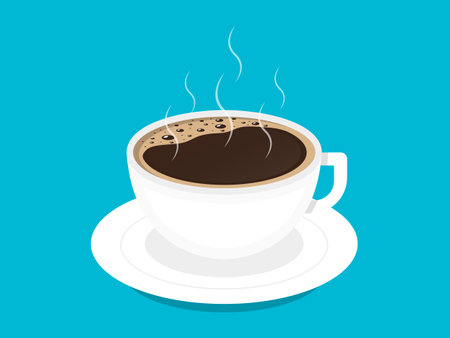1. Choosing the Right Beans
If you want to make a barista-quality cappuccino at home, it all starts with choosing the right coffee beans. The type of beans you use will directly impact the flavor, aroma, and overall quality of your cappuccino. Here’s how to pick beans that match your taste and are commonly loved by coffee drinkers across the U.S.
Understand Your Roast Levels
Roast level plays a big role in the flavor of your coffee. Whether you like something bold or smooth, here’s a quick breakdown of common roast types:
| Roast Level | Flavor Profile | Popular With |
|---|---|---|
| Light Roast | Bright, acidic, fruity notes; preserves more of the bean’s original flavor | Those who enjoy subtle flavors and single-origin coffees |
| Medium Roast | Balanced flavor, medium acidity, and body; slightly sweet and nutty | The most popular choice among American coffee drinkers |
| Dark Roast | Bitter-sweet, smoky, bold flavors; lower acidity | Fans of strong, rich coffee (think traditional espresso lovers) |
Selecting the Bean Origin
The region where your coffee is grown also influences its flavor. Here are some popular origins and what they typically bring to your cup:
| Origin | Taste Notes | Why It’s Great for Cappuccinos |
|---|---|---|
| Colombia | Well-balanced, mild with hints of caramel and nuts | A safe go-to for smooth cappuccinos with gentle sweetness |
| Ethiopia | Floral, fruity, complex acidity | Adds a bright and unique twist to your morning cup |
| Brazil | Chocolatey, nutty, low acidity | Makes for a creamy cappuccino with classic flavors |
| Sumatra (Indonesia) | Earthy, full-bodied, herbal tones | Perfect if you like bold, rich cappuccinos with depth |
Whole Beans vs. Pre-Ground Coffee
If youre aiming for top-notch freshness and flavor, always go for whole beans and grind them just before brewing. Pre-ground coffee loses its aroma quickly and may not give you that café-level experience.
Pro Tip:
Look for beans labeled as “espresso roast” if youre new to home brewing. They’re often roasted specifically to pair well with milk-based drinks like cappuccinos.
Your Taste Matters Most!
No matter what anyone says, the best beans are the ones you love. Don’t be afraid to try different roasts and origins until you find your perfect match. Many local roasters offer sample packs so you can explore without committing to a full bag.
Selecting high-quality beans is the first step toward crafting that dreamy cappuccino right in your kitchen—just like your favorite barista would make it.
2. Grinding for the Perfect Shot
When it comes to making a cappuccino that tastes like it came from your favorite local café, grinding your coffee beans just right is key. The grind size directly affects how your espresso extracts — and that means it affects flavor, aroma, and crema. Heres how you can nail the perfect grind at home.
Why Grind Size Matters
Espresso requires a fine grind — not powdery like flour, but definitely finer than what youd use for drip coffee. If the grind is too coarse, your espresso will be weak and watery. Too fine, and it can taste bitter or over-extracted. Getting the right texture is essential for pulling a rich, balanced shot.
Use a Burr Grinder (Not a Blade Grinder!)
If youre serious about making barista-quality drinks at home, invest in a burr grinder. Unlike blade grinders that chop unevenly, burr grinders crush beans between two surfaces, giving you a consistent grind every time. Consistency is crucial when youre brewing espresso.
Blade vs Burr Grinder Comparison
| Feature | Blade Grinder | Burr Grinder |
|---|---|---|
| Grind Consistency | Poor | Excellent |
| Control Over Grind Size | Limited | High |
| Best For | Drip or French Press Coffee | Espresso & Specialty Coffee |
| Price Range (USD) | $20–$40 | $80–$300+ |
Finding the Right Espresso Grind Size
The ideal espresso grind should feel like fine sand between your fingers — gritty but not powdery. It should clump slightly when pinched together. If you’re new to this, don’t worry! Most burr grinders come with settings labeled specifically for espresso.
Quick Tip:
If your shot pulls too fast (under 25 seconds), try a finer grind. If it pulls too slow (over 35 seconds), go coarser. Aim for a 25–30 second extraction time.
Storing Your Ground Coffee
Once you’ve ground your beans, use them immediately for the freshest flavor. If you must store them, keep them in an airtight container away from light and heat — but remember, freshly ground is always best!
A well-calibrated grinder sets the stage for everything that follows — from tamping to steaming milk — so take your time to get this step right.

3. Pulling an Espresso Like a Pro
If you want your homemade cappuccino to taste like it came from your favorite café, nailing the espresso shot is key. A balanced shot brings out the rich, bold flavors without bitterness or sourness. Here’s how to pull an espresso like a seasoned barista, right from your kitchen.
The Basics of a Great Shot
A proper espresso shot starts with fresh coffee beans, a quality grinder, and some attention to detail. The process involves dosing, tamping, and pulling the shot under the right pressure and timing.
Step-by-Step Espresso Guide
| Step | Description | Tips |
|---|---|---|
| Dose | Use about 18–20 grams of freshly ground coffee for a double shot. | Weigh your grounds using a scale for consistency. |
| Tamp | Evenly compress the grounds in the portafilter using firm, level pressure. | Aim for around 30 pounds of pressure—enough to create resistance without overdoing it. |
| Pull | Start the machine and extract for about 25–30 seconds. | You should see a steady stream resembling warm honey. |
Know Your Timing
The flavor of your espresso largely depends on how long it takes to extract. Too fast, and the coffee may be weak and sour. Too slow, and it could turn bitter. Heres a quick guide:
| Extraction Time | Taste Result |
|---|---|
| <20 seconds | Under-extracted: Sour, watery flavor |
| 25–30 seconds | Balanced: Rich and smooth flavor |
| >35 seconds | Over-extracted: Bitter and harsh taste |
Pressure Matters
Your espresso machine should apply around 9 bars of pressure during extraction. This helps push hot water evenly through the coffee puck, unlocking deep flavors and creating that signature crema on top.
Pro Tip:
If your shot pulls too quickly or slowly, adjust your grind size first—finer for slower flow, coarser for faster flow. Small tweaks make a big difference!
With practice and attention to these details, youll be pulling espresso shots that rival your local café’s in no time.
4. Steaming Milk to Silky Perfection
Creating that smooth, velvety microfoam is what takes a cappuccino from homemade to barista-level. Whether you have an espresso machine with a steam wand or youre working with more basic kitchen tools, you can still get that creamy, cloud-like texture right at home.
With a Steam Wand
If your espresso machine has a steam wand, you’re already ahead of the game. Heres how to use it properly:
- Start Cold: Use cold milk and a chilled stainless steel pitcher for better control and texture.
- Position the Wand: Submerge the tip just below the surface of the milk and angle it slightly to create a whirlpool effect.
- Stretch and Texture: For the first few seconds, keep the tip near the surface to introduce air (“stretching” phase). Then submerge it deeper to heat and texture the milk evenly.
- Temperature Check: Stop steaming when the pitcher feels hot to touch (around 150°F or 65°C).
No Steam Wand? No Problem!
You don’t need fancy gear to froth milk. Here are some easy alternatives:
| Method | How It Works | Best For |
|---|---|---|
| Mason Jar | Add warm milk, seal lid, and shake vigorously until frothy. | Quick & simple prep with minimal tools |
| French Press | Add warm milk and pump plunger up and down rapidly. | Smoother foam with better control |
| Handheld Frother | A battery-powered tool that whisks milk into foam quickly. | Creamier results without much effort |
The Perfect Microfoam
A true cappuccino features microfoam—tiny bubbles that give milk a silky, glossy finish. Here’s what to aim for:
- No big bubbles—those belong in bubble baths, not cappuccinos.
- The foam should flow smoothly like wet paint when poured.
- The final texture should be thick enough to sit atop your espresso but light enough to blend beautifully.
Nailing this step might take a little practice, but once you do, your homemade cappuccinos will rival your favorite coffee shop’s creations.
5. Assembling Your Cappuccino
Now that youve got your espresso shot ready and your milk perfectly steamed and frothed, its time to bring everything together into a barista-quality cappuccino. This part is all about timing, technique, and the classic ratio that defines this iconic drink.
The Classic Cappuccino Ratio
A traditional cappuccino follows a simple 1:1:1 ratio:
| Component | Ratio | Description |
|---|---|---|
| Espresso | 1/3 | A strong, rich shot of coffee as the base |
| Steamed Milk | 1/3 | Heated milk that adds creaminess and body |
| Milk Foam | 1/3 | Light and airy foam that sits on top |
Step-by-Step Layering Guide
Step 1: Start with the Espresso
Brew a fresh shot (or double shot) of espresso directly into your cappuccino cup. If youre using a machine without direct brew into the cup, pour it in right after brewing to keep it hot and fresh.
Step 2: Add Steamed Milk
Hold back the foam with a spoon or by tilting your milk pitcher slightly, then pour in just enough steamed milk to fill another third of the cup. The goal is to add warmth and smoothness without disrupting the espresso layer too much.
Step 3: Top with Milk Foam
Spoon or gently pour the milk foam onto the top layer until it reaches the rim of your cup. A perfect cappuccino will have equal layers of dark espresso at the bottom, creamy milk in the middle, and light foam on top.
Step 4: Optional Finishing Touches
If you want to get fancy or match what youd get at an American café, sprinkle a little cocoa powder, cinnamon, or nutmeg over the foam. Some people also like adding latte art—just remember that true cappuccinos have thicker foam, which makes detailed art more difficult.
Pro Tip:
If your foam is too stiff or too runny, revisit your frothing technique from earlier steps. Great foam makes all the difference!
Once youve assembled your cappuccino with care, take a sip—you just made a café-style drink at home!
6. Adding a Personal Touch
Now that youve mastered the basics of making a barista-quality cappuccino, its time to make it your own! One of the best parts of enjoying coffee at home is customizing it to match your mood, season, or personal taste. Here are some fun and easy ways to add a personal touch to your cappuccino, inspired by American coffee culture.
Flavor It Your Way
Add flavored syrups or spices to bring your cappuccino to life. Whether youre into classic vanilla or something adventurous like pumpkin spice, theres a flavor for every palate. Heres a quick guide:
| Flavor | How to Add It | Seasonal Tip |
|---|---|---|
| Vanilla | Add 1 tsp of vanilla syrup before pouring in the milk | Perfect year-round |
| Pumpkin Spice | Mix pumpkin spice syrup or a pinch of spice blend with espresso | Fall favorite (think pumpkin spice latte vibes!) |
| Caramel | Drizzle caramel sauce over the foam or mix into espresso | Great for winter warmth |
| Peppermint | Add peppermint extract or syrup for a minty twist | A holiday classic |
Try Some Latte Art
You don’t need to be a pro barista to try latte art! Start simple with hearts or swirls using a toothpick or latte art pen. The key is getting your milk froth smooth and velvety — practice makes perfect!
Beginner Latte Art Ideas:
- The Heart: Pour milk steadily into the center, then pull through with a quick flick.
- The Rosetta: Wiggle the pitcher side-to-side as you pour, finishing with a straight pull through.
- The Swirl: Use a toothpick to draw gentle curves after pouring.
Add Seasonal Twists
American coffee culture loves celebrating the seasons with themed drinks. You can too! Try switching up your cappuccino based on holidays or seasonal ingredients.
| Season | Cappuccino Twist |
|---|---|
| Fall | Pumpkin spice, cinnamon dusting, nutmeg sprinkle |
| Winter | Peppermint mocha flavoring, chocolate shavings on top |
| Spring | Lavender syrup, floral latte art patterns |
| Summer | Iced cappuccino version with vanilla or coconut syrup |
Your kitchen is your café — have fun experimenting and find what makes your cappuccino uniquely yours!


